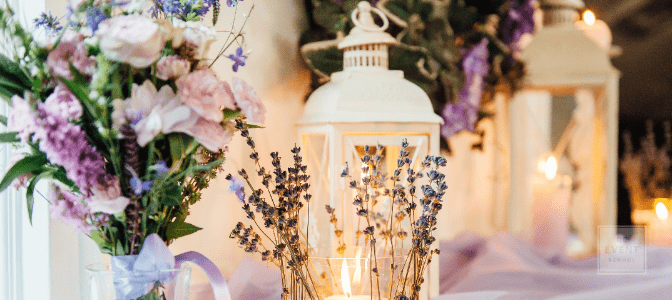
The Wedding Planner’s Guide to Creating the Seating Plan: Part I
The dreaded seating plan is often one of the most stressful parts of wedding planning. Everyone and their mothers have something to say about how the seating arrangements should be made. While more rebellious spirits choose to forgo a seating plan altogether and let everyone sit where they please, this can cause a lot of confusion, awkwardness, and tension when the big day comes.
Having some sort of a plan is in everyone’s interest. It relieves a lot of stress on that special day when feuding relatives cross paths. The best time to start the actual seating plan is after the venue is booked and the deadline for RSVPs has passed.
A perfect seating plan is impossible, but it is possible to create a near perfect one! If you’re stumped about where to start, read on for tips on conquering the seating plan.
Leave breathing space

Double and triple check how much room the venue has and grab a floor plan. You have to make sure there’s ample space for a bar, a dance floor, and all the tables you‘ll need.
Between the tables, make sure there’s at least 5 feet or 1.5 meters of space to allow guests to pull back their chairs and for servers to get through. Tables should also be positioned 2.5 feet or 0.75 meters from a wall, and not block any doors or emergency exits.
Pick your head table
Traditionally, the newlyweds and their wedding party had their own elevated, rectangular table at the front of the room facing the dance floor. Nowadays, there are no hard-and-fast rules when it comes to what the head table should be like. Here are four of the most popular variations:
The Sweetheart table
Made famous by the Beckhams, this is a more intimate experience where only the bride and groom are seated together. To make sure they aren’t totally shut off from everyone, bring in a couple of extra chairs so that anyone can go up and dine for a bit with the happy couple.

With the in-laws
With the bonus of not separating the wedding party from their dates, some couples prefer to sit with their families. This generally works best if everyone on both sides of the family gets along.
In the center
The head table is located in the middle of the floor plan so that most people are seated at an equal distance from the couple.
The nomads
Sometimes the happy couple may want to mingle with more than one set of people during dinner. At each course of the meal, the bride and groom migrate between a few designated tables with extra seats so they can socialize with a variety of guests.

Cards on the table
Before you start selecting table cloths and place cards for the tables, your clients must choose the shape of the table they want—square, rectangle, or circle. A rectangular table is the easiest to find accompanying table cloths for, but a round table is often the most popular choice.
With round tables, you won’t find yourself struggling to maintain balance when adding or removing a couple guests from their table. The round shape helps facilitate conversation as everyone can see, hear, and respond to one another freely.
For a conventional 5-foot-wide round table, you should fill up most of the spots but leave room to slot in additional chairs should any surprise late additions arrive. 8 is the ideal number of seats per table, as it doesn’t seem awkwardly small, and elbows aren’t rubbing when guests are polishing off their plates.
Seat assignments!

Ultimately it’s up to your clients and how much control they want to exercise over the seat plan. They can’t anticipate and control everything. Make sure that you advise your clients to allow for late additions or be mindful of potential seating mishaps. When creating their seating plan, your clients have a few options…
By Categories…
Guests walk in and choose their own seats with general guidelines, such as college friends, childhood friends, relatives, etc. Guests can choose who they want to sit with—but be careful, because categories can be vague and confusing. Sometimes a person might fall into multiple groups, like a childhood friend of the bride who also went to college with her. Tables can quickly fill with people that may have been better suited elsewhere, and strays will end up at a makeshift “leftovers” table. This style of seating plan is best suited for a buffet-style meal.
By Tables…
Guests are assigned a table and must seat themselves. To figure out where they’re sitting, guests pick up escort cards when they arrive at the reception, or they look at a seating chart.
While they are assigned a table to sit at, they ultimately get to choose who they want to sit next to. Servers know where the meals are going, but have to do a little detective work when they arrive at the table to find out who ordered what.

By Names…
Guests are told exactly which table they are sitting at and where they’re sitting at the table. Escort cards or seating charts are used along with place cards at the table. This style of seating planning is best if the meal includes multiple courses with a larger selection of choices for each course. The servers will be better able to keep track of dietary restrictions and deliver the correct courses without much fuss. Of course, it also means guests don’t get a choice about who they’re sitting next to.